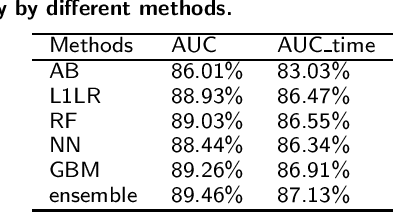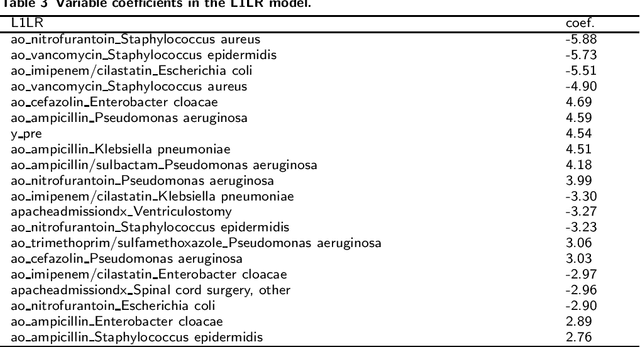Helen van Aggelen
Predicting Antimicrobial Resistance in the Intensive Care Unit
Nov 05, 2021


Abstract:Antimicrobial resistance (AMR) is a risk for patients and a burden for the healthcare system. However, AMR assays typically take several days. This study develops predictive models for AMR based on easily available clinical and microbiological predictors, including patient demographics, hospital stay data, diagnoses, clinical features, and microbiological/antimicrobial characteristics and compares those models to a naive antibiogram based model using only microbiological/antimicrobial characteristics. The ability to predict the resistance accurately prior to culturing could inform clinical decision-making and shorten time to action. The machine learning algorithms employed here show improved classification performance (area under the receiver operating characteristic curve 0.88-0.89) versus the naive model (area under the receiver operating characteristic curve 0.86) for 6 organisms and 10 antibiotics using the Philips eICU Research Institute (eRI) database. This method can help guide antimicrobial treatment, with the objective of improving patient outcomes and reducing the usage of unnecessary or ineffective antibiotics.
 Add to Chrome
Add to Chrome Add to Firefox
Add to Firefox Add to Edge
Add to Edge